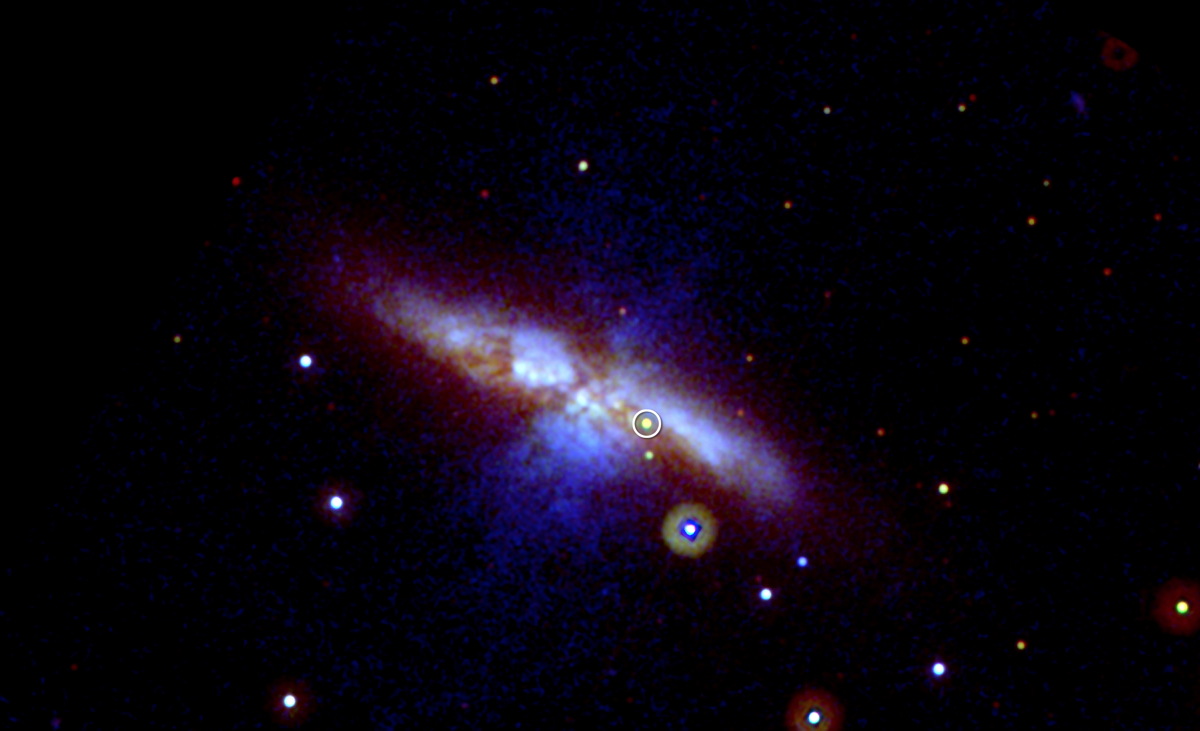See the New Supernova in Galaxy M82 Today in Live Webcast

A new supernova discovered by students in London is starring in a new webcast, and you can watch it live online today (Jan. 30).
Supernova 2014J was spotted by four undergraduate students observing galaxy M82 while astronomer Steve Fossey taught them how to use a telescope at the University College London Observatory on Jan. 21. Fossey and his students will take part in the online Slooh Space Camera webcast about the exploding star discovery beginning at 4 p.m. EST (2100 GMT). You can watch the live broadcast featuring views of the new supernova on Space.com via Slooh.
"We are looking forward to this broadcast," Slooh technical director Paul Cox, who will interview Fossey and the students, said in a statement. "It's always a pleasure to interview those responsible for a new discovery — getting their unique perspective — while watching live images on Slooh." [See photos of the new supernova in galaxy M82]
SN 2014J is the closest of its kind to Earth in more than 40 years. Ben Cooke, Tom Wright, Matthew Wilde and Guy Pollack — the astronomy students speaking with Slooh today — caught sight of the star explosion after Fossey saw something odd when adjusting the telescope. They found the new supernova by checking an online archive of M82 images and seeing that it was a new feature on of the galaxy.
"The weather was closing in, with increasing cloud, so instead of the planned practical astronomy class, I gave the students an introductory demonstration of how to use the CCD camera on one of the observatory's automated 0.35–metre [13.7-inch] telescopes," Fossey said in a statement from UCL.
The new supernova is about 11 million light-years from Earth and is expected to brighten until Feb. 2, when it might be visible with only binoculars. Scientists think the new star explosion is a Type 1a supernova — the kind astronomers use as "standard candles" to measure cosmic distances because they have comparable intrinsic brightness.
NASA is planning to make observations of SN 2014J using observatories like the Hubble Space Telescope, the Nuclear Spectroscopic Telescope Array (NuSTAR), the Fermi Gamma-ray Space Telescope and the Chandra X-ray Observatory. The space agency's Swift spacecraft has already taken images of the new supernova.
Get the Space.com Newsletter
Breaking space news, the latest updates on rocket launches, skywatching events and more!
"Finding and publicizing new supernova discoveries is often the weak link in obtaining rapid observations, but once we know about it, Swift frequently can observe a new object within hours," Neil Gehrels, the Swift mission's principal investigator at NASA's Goddard Space Flight Center in Greenbelt, Md., said in a statement on Jan. 24.
You can also watch the supernova webcast directly from Slooh at http://events.slooh.com/.
Follow Miriam Kramer @mirikramer and Google+. Follow us @Spacedotcom, Facebook and Google+. Original article on Space.com.
Join our Space Forums to keep talking space on the latest missions, night sky and more! And if you have a news tip, correction or comment, let us know at: community@space.com.

Miriam Kramer joined Space.com as a Staff Writer in December 2012. Since then, she has floated in weightlessness on a zero-gravity flight, felt the pull of 4-Gs in a trainer aircraft and watched rockets soar into space from Florida and Virginia. She also served as Space.com's lead space entertainment reporter, and enjoys all aspects of space news, astronomy and commercial spaceflight. Miriam has also presented space stories during live interviews with Fox News and other TV and radio outlets. She originally hails from Knoxville, Tennessee where she and her family would take trips to dark spots on the outskirts of town to watch meteor showers every year. She loves to travel and one day hopes to see the northern lights in person. Miriam is currently a space reporter with Axios, writing the Axios Space newsletter. You can follow Miriam on Twitter.